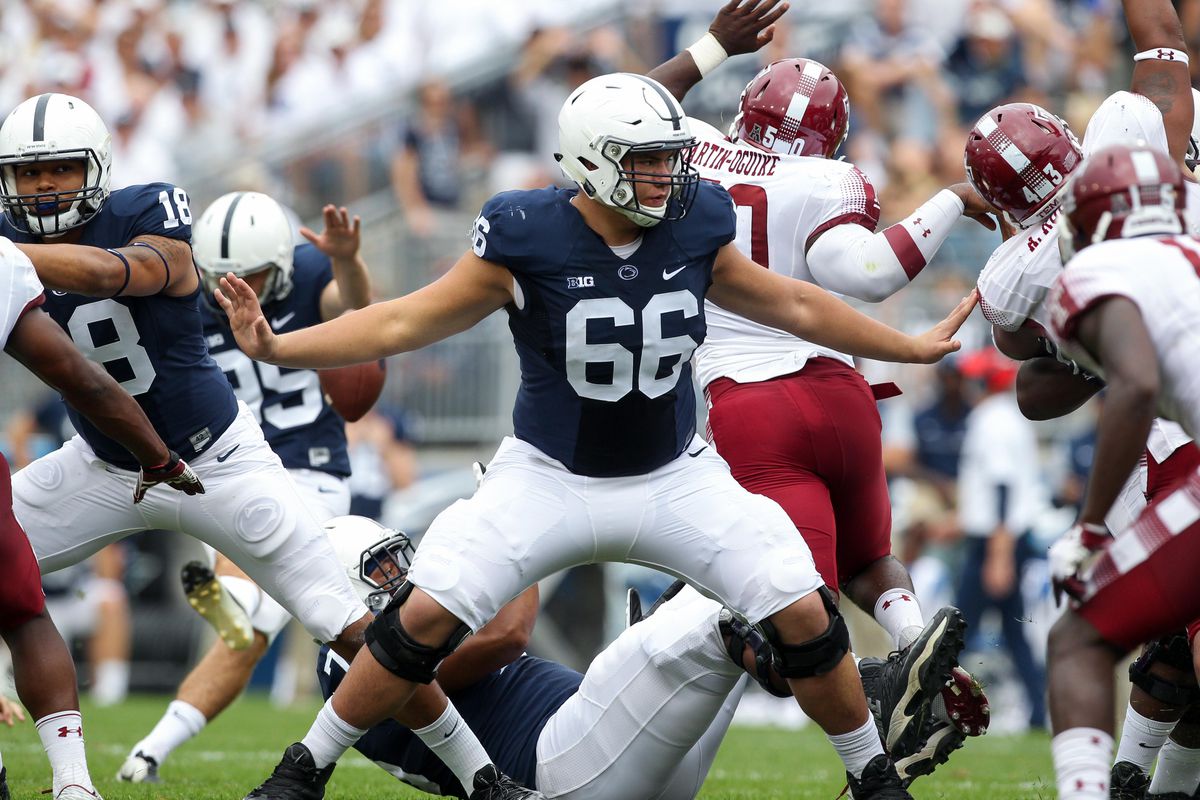Anthony Nelson, DE Iowa
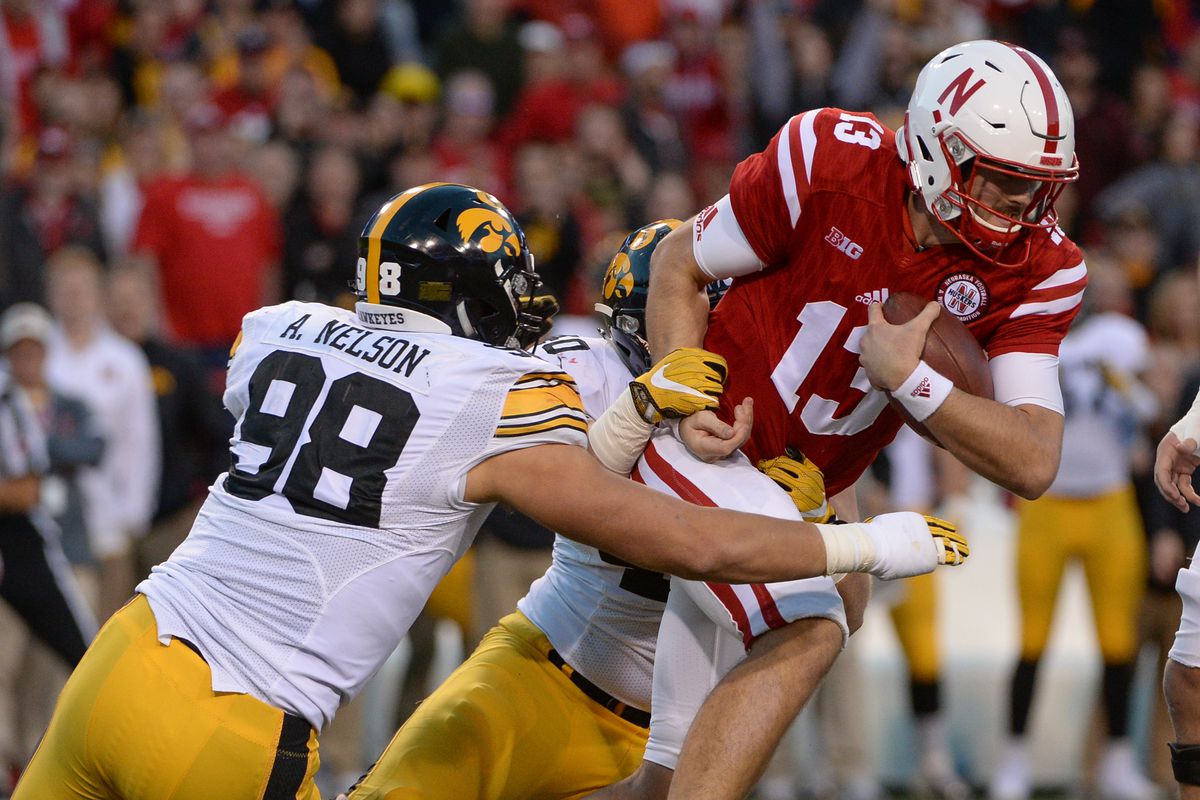
Photo Credit: Des Moines Register
The Panthers trio of Mario Addison, Julius Peppers and Wes Horton combined for 27.5 sacks last season, and based on that number the Panthers would have limited need to add another pass rusher on the edge, especially when the effective addition of Daeshon Hall and Marquis Haynes to last year’s group. However, Haynes doesn’t appear to be much more than a third down specialist, at least right now, and it is far from clear what they have in Hall after a fairly quiet training camp thus far. What is more, it would be foolish to count on Peppers to be around beyond this season and with Wes Horton a free agent after this season and Addison a free agent the season after, the Panthers will almost certainly be in the market for a defense end again next offseason even if Addison and Horton return as starters.
What they are likely to lose in Peppers, aside from a veteran leader and an all-time great, is somebody who can effect the game as a pass rusher while also being able to hold his own in the run game with an unusual combination of size and quickness. While the Panthers are likely to continue to rotate heavily along the defensive line, having players like Peppers who can be used as every down defenders if need be is hugely valuable to counter teams who look to catch a defense in a certain personnel grouping. While still a Junior, and therefore far from certain to be available in the 2019 draft, Anthony Nelson is gradually making a name for himself as a potential three-down defensive end in the NFL with an impressive 6’7, 270 pound frame and 13.5 sacks over his first two seasons.
On tape, Nelson shows a lot of things to like, with quick and powerful punch to keep blockers away from his frame and a decent bend around the edge. He is never going to be flying past tackles on a speed rush, but he has enough quickness to get half a step and then uses his hands well to help him turn the corner. For him to reach his full potential there are a number of things he will need to work on, most notably maintaining a consistently good pad level – always an issue for taller defensive ends; watching how he is able to improve in these areas will be a good indicator of whether he will be seen as one of the top defensive ends in the draft class or not.
Te’Von Coney, LB Notre Dame
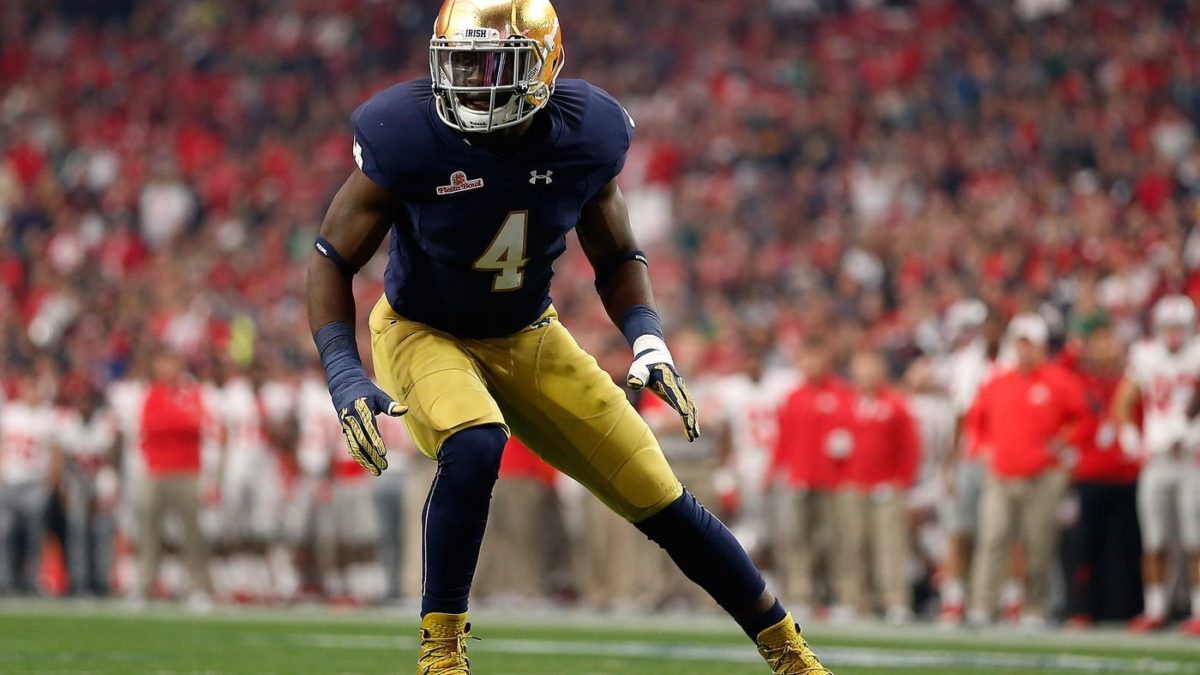
Photo Credit: One Foot Down
The Panthers’ linebacker corps has been an area of extreme strength in recent years, but with Thomas Davis’s continued flirtation with retirement slowly reaching some sort of climax, the Panthers will be faced with a new starting pair for the first time in over half a decade. Fans will get a preview of this through the first four games of next season, with Davis undergoing a four game PED violation; while Shaq Thompson is expected to slot smoothly into the starting role alongside Kuechly, how David Mayo will fare in the tertiary linebacker role is a question mark – while he has shown an effectiveness in the run game, his pass coverage skills are still somewhat up in the air. What’s more, Mayo will be a free agent next offseason and if he does play to a high level in place of Davis, the Panthers will then almost certainly face competition from teams willing to pay Mayo starting linebacker money, as they did with AJ Klein a year ago. The Panthers are aware of this, hence the drafting of two linebackers on the final day of the 2018 draft, but if neither of those look capable of stepping into a rotation role next season, the Panthers could be forced into adding a linebacker once again.
Te’Von Coney is a very similar player to what David Mayo was at Texas State, in that he is a physical run defender who, despite being somewhat limited as pass defender, has the athletic potential to develop into a good coverage player with time. Coney averaged nine tackles per game last season at Notre Dame, including a Kuechly-esque 17 tackles against LSU in the bowl game and shows a lot to like on tape. At 6’1 and a shade under 240 pounds, Coney has the size to take on blockers in the run game; combined with good gap integrity and sound tackling technique, this allows him to be a persistent threat to teams looking to run the ball inside. What is especially promising is how he uses his hands to shed blocks, allowing him to make plays outside of his gap assignment.
In coverage, Coney shows the speed to run with running backs and tight ends and has the lateral agility to be effective in man coverage against all but the very best pass-catching backs. Where he needs to improve is in zone coverage, where he was often asked to simply drop and act almost like a QB spy, rather than having a NFL-like zone responsibility. Coney has not had a single interception or even pass deflection so far in his college career, and for teams this will likely be a significant red flag should it continue through next season – though if he is able to show that he has those core skills in the passing game then he will likely propel himself into early round consideration. Coney likely made a smart decision in returning to school as there are real questions about the completeness of his game which 2018 will give him a chance to dispel, but even if all he is is a run-game thumper then he will have value in the NFL for a team willing to take a chance as his athletic potential is significant.
Mike Edwards, SS Kentucky
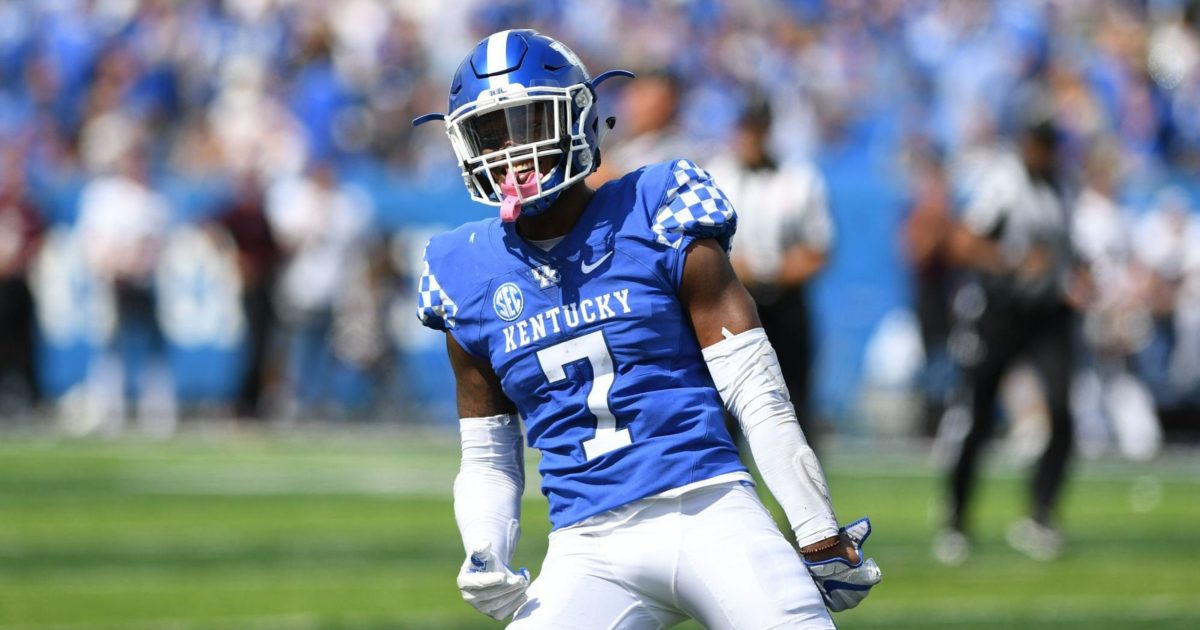
Photo Credit: SEC Country
The Panthers need at safety is unlikely to go away next offseason, with Mike Adams becoming a free agent and quite possibly retiring, leaving a gap at strong safety. Da’Norris Searcy could make the move to strong safety leaving Rashaan Gaulden as the presumptive starter at free safety; however, while Searcy is an effective run defender, he has shown himself to be somewhat limited in coverage and as a free agent in 2020 is not a long-term solution even if he steps in to start in 2019. Historically, the Panthers have had a significant amount of instability at the safety position under Ron Rivera, and with Gaulden looking to emerge as the long-term free safety, adding a long-term strong safety could give the Panthers a shot at the consistent safety pairing that they have lacked in recent memory.
Mike Edwards might not be the biggest name in college football, but he has put up big-name type numbers in recent years, as over the past season he has posted an impressive stat line of 196 tackles, 1.5 sacks, 7 interceptions and 14 pass deflections. By comparison Minkah Fitzpatrick managed 126 tackles, 3 sacks, 7 interceptions and 15 pass deflections over his final two seasons at Alabama and he was viewed as a proven college player entering the draft. Edwards’ production isn’t just impressive by the numbers, it shows up on tape as well as an active safety who looks to be around the ball in both the passing and rushing games. While at 6’0 and roughly 200 pounds he isn’t the biggest safety, he gets off blocks well and is a technically sound tackler. He could sometimes do with slowing down a little as his frenetic style does lead to some mistakes, but the ability is certainly there.
In the pass game, Edwards has the speed to run with receivers in space, and the lateral agility and ball skills to be effective in either man coverage or zone, which gives him a lot of flexibility in terms of how he is used on the field. He can play in the box, in the slot or as the deep safety and as coverage versatility continues to become more and more valued in safety prospects, Edwards is very much a safety prospect for the coming era of NFL football and as with many players putting up big numbers at smaller schools, he is falling somewhat under the radar. Expect bug numbers from Edwards once again this season.
Corliss Waitman, P Southern Alabama
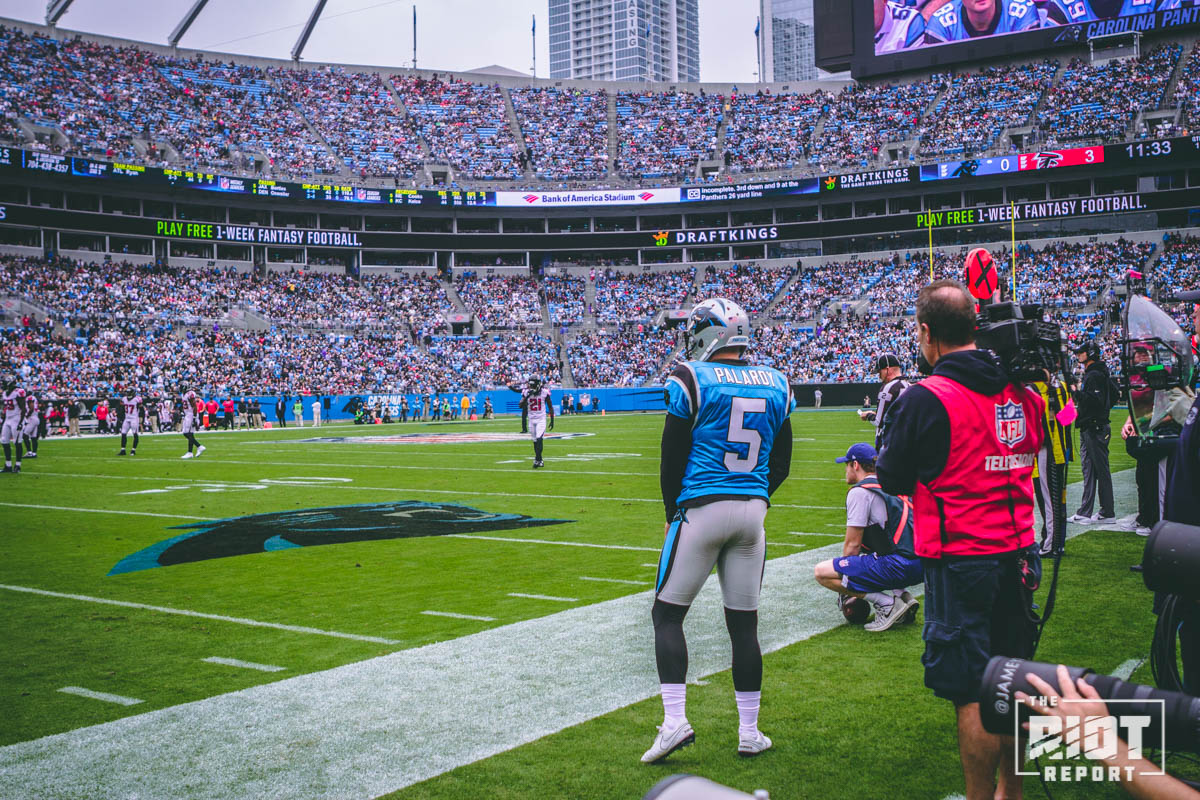
Punters matter too, and while Michael Palardy is back for 2018, he is a free agent after this season and his play thus far has been good but not necessarily so good as to be the definite long-term punter going forward. Even if Palardy does come back, unless he does so off a monster season with a large long-term contract, then the Panthers could well do what they did with Graham Gano in 2017 and bring in a rookie to compete in camp without necessarily viewing them as the long-term punter either.
2017 was Waitman’s first season as the full time starter at punter and certainly put up numbers that will catch some eyes, averaging just over forty-five yards per punt with a long of over sixty-five yards. The correlation between college and NFL punting numbers for a given player make it hard to accurately project college punters to the NFL without information unavailable to those not watching games on the couch with a stop-watch, but Waitman certainly passes the eye test when it comes to hang time, location and distance. It’s unlikely many people will be tuning into Southern Alabama games just to watch Waitman, but punter shouldn’t be ignored as a potential need for the Panthers going into next offseason.

